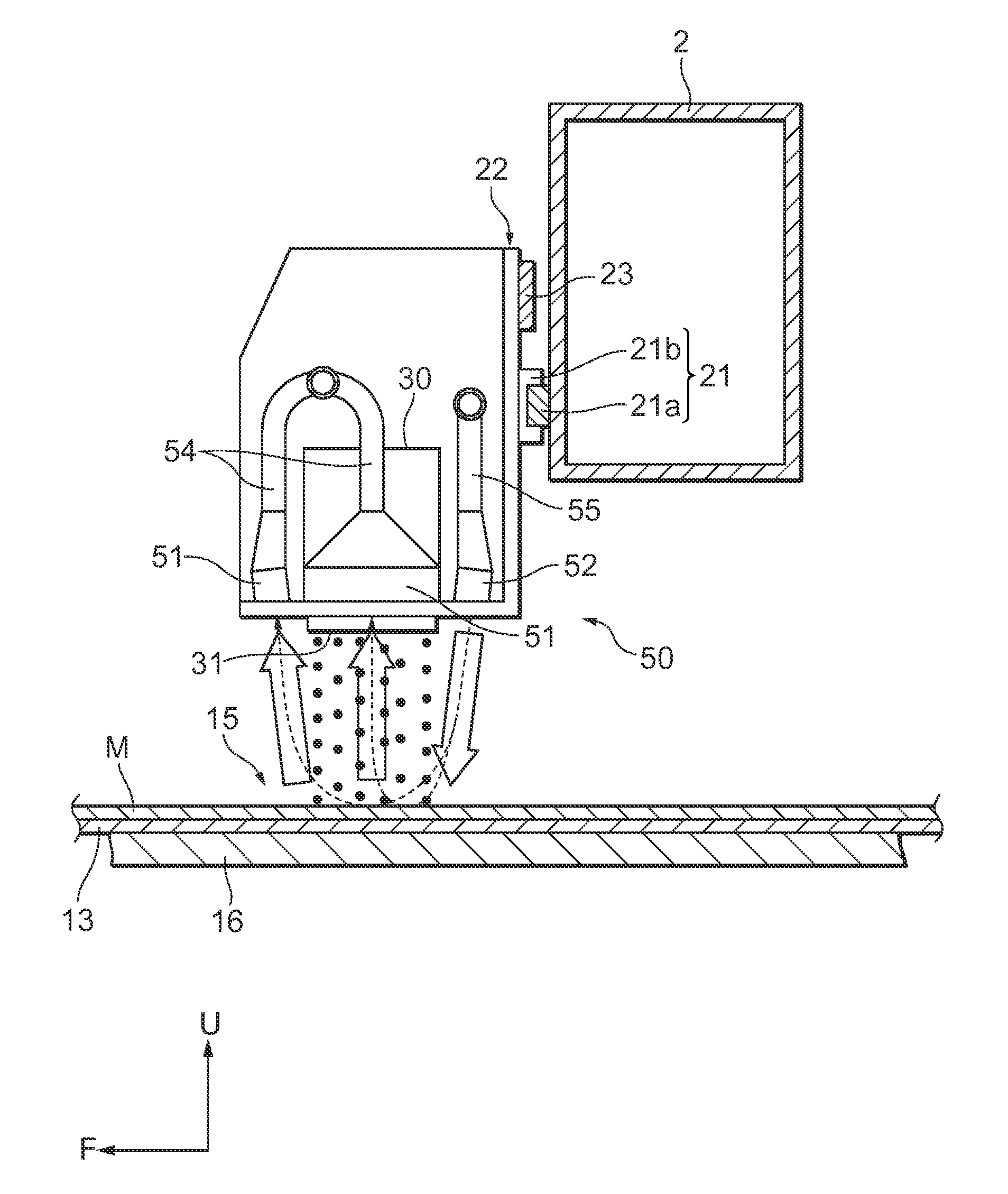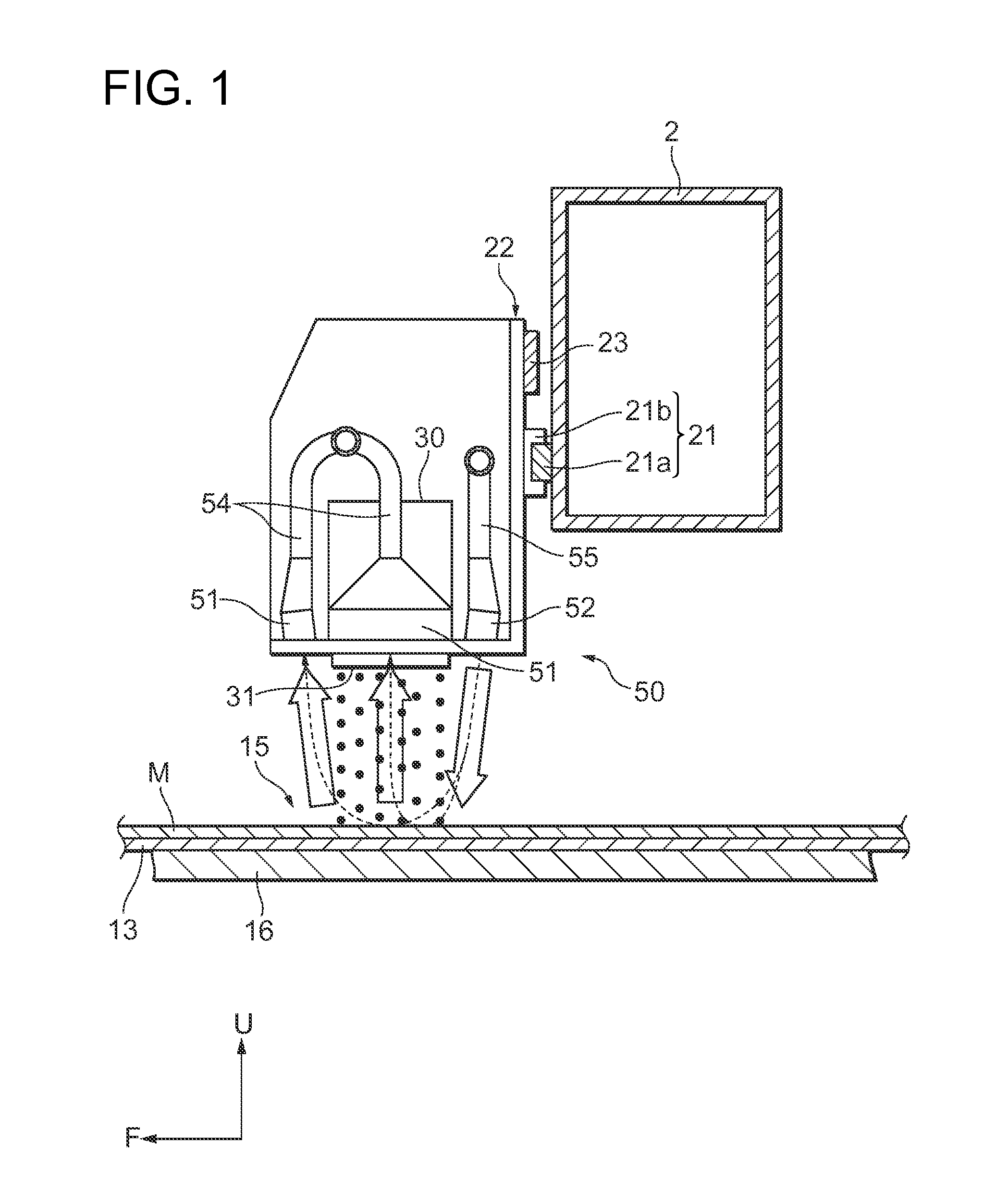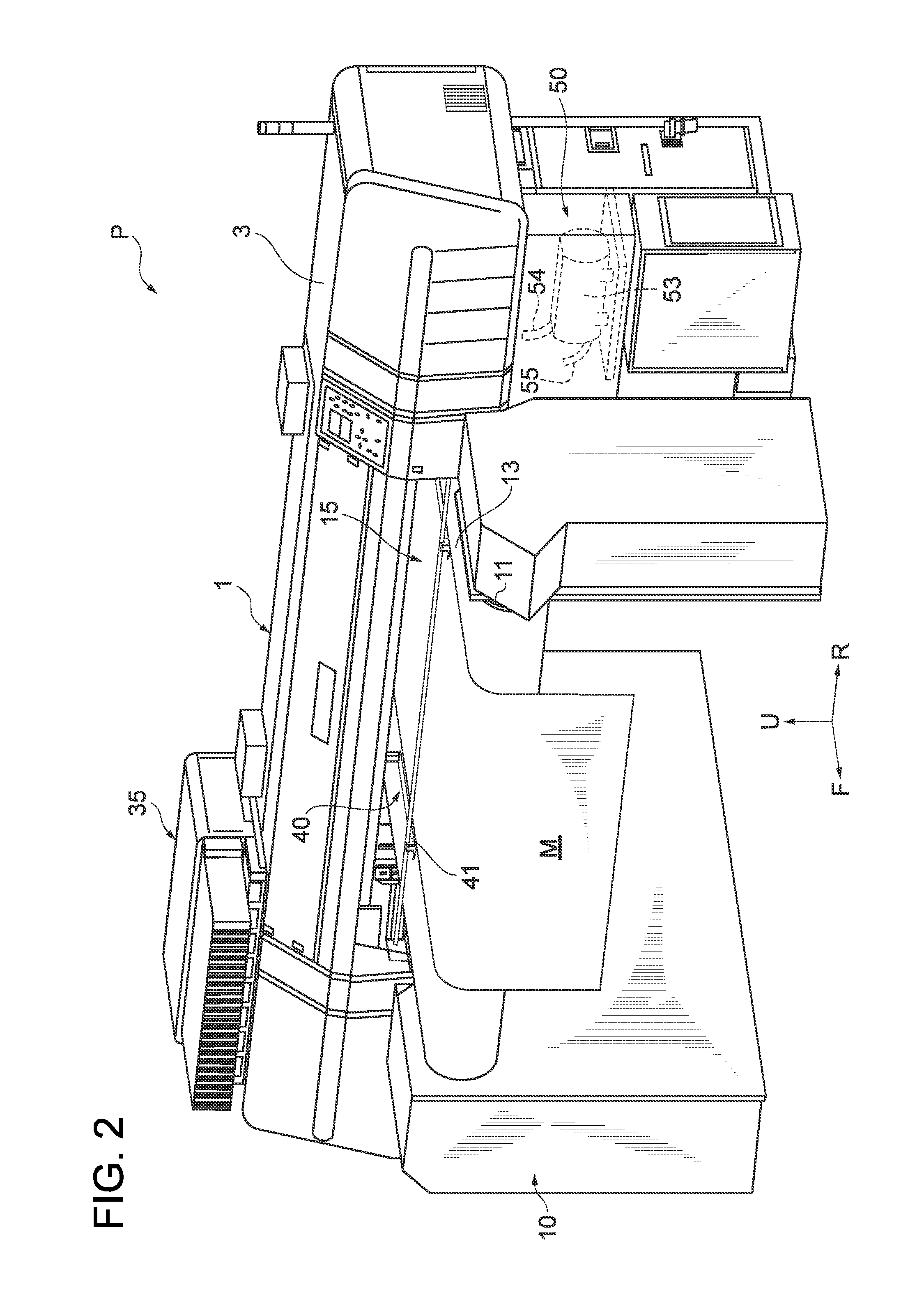Inkjet printer
a printer and inkjet technology, applied in the direction of printing, other printing apparatus, etc., can solve the problems of stains, discharge failure, and easy damage to other structural parts of the printer, and the drop of satellite ink is also easily affected
- Summary
- Abstract
- Description
- Claims
- Application Information
AI Technical Summary
Benefits of technology
Problems solved by technology
Method used
Image
Examples
Embodiment Construction
[0017]Exemplary embodiments of the present invention are explained below with reference to the accompanying drawings, wherein like reference numerals designate corresponding or identical elements throughout the various drawings. In the present embodiment, a configuration example is explained in which the embodiment of the present invention is applied to a textile inkjet printer that uses a band-shaped cloth, which is horizontally wider and longitudinally longer, as a printing medium M. FIG. 2 is a perspective view of an inkjet printer P when viewed obliquely from front and FIG. 3 is a schematic structure of the inkjet printer P. First, a schematic structure of the inkjet printer P is explained with reference to these drawings. Meanwhile, in the following explanation, directions indicated by arrows F, R, and U are forward direction, rightward direction, and upward direction, respectively.
[0018]The inkjet printer P broadly includes a media moving mechanism 10 and a head moving mechani...
PUM
 Login to View More
Login to View More Abstract
Description
Claims
Application Information
 Login to View More
Login to View More - R&D
- Intellectual Property
- Life Sciences
- Materials
- Tech Scout
- Unparalleled Data Quality
- Higher Quality Content
- 60% Fewer Hallucinations
Browse by: Latest US Patents, China's latest patents, Technical Efficacy Thesaurus, Application Domain, Technology Topic, Popular Technical Reports.
© 2025 PatSnap. All rights reserved.Legal|Privacy policy|Modern Slavery Act Transparency Statement|Sitemap|About US| Contact US: help@patsnap.com



